
Photo: FR NEC
Leonardo Fornaroli became FIA F3 champion without winning a race. Who else has taken an overall title in a contemporary junior single-seater series but never met the chequered flag first? Here are five notable cases
Formula Renault 2.0
Michael Benyahia 2017 FR2.0 NEC 1x 3rd
For many years, Formula Renault’s Northern European Cup was the Eurocup’s well respected sibling, with future Formula 1 and Formula E stars becoming champions. But after Lando Norris won the title in 2016, FR2.0 NEC’s stock dropped. It reduced from seven rounds to five in 2017, to remove date clashes with the Eurocup which had grown from seven rounds to 10.
Racing in both wasn’t feasible, and the effect was so extreme that the NEC grid shrunk from 16 full-time drivers to five. None of the five won a race, despite two going on to become world-class talents.
Tech 1 Racing’s Gabriel Aubry dominated round one at Monza, but skipped round two at Assen. There the victories went to MP Motorsport’s Red Bull juniors Neil Verhagen and Richard Verschoor, and R-ace GP’s full-timer Gilles Magnus – since a World Touring Car Cup race-winner – took pole for both races, a second place and the points lead.
Josef Kaufmann Racing joined for the rest of the year, and its drivers won all but one race. Sacha Fenestraz fought with Dan Ticktum to do the double at the Nurburgring, as Aubry returned to the top of the standings, then at Spa-Francorchamps the grid was shared with the Eurocup. Drivers’ entry forms could only have them down for points in one of the two series that weekend, and only NEC’s five full-timers stayed local. Aubry was a Eurocup title outsider, so priorirtised that over his NEC lead.
Fenestraz claimed pole for all three Spa races, and won a foggy three-lap race one behind the safety car which awarded half-points. Magnus claimed the maximum NEC score and the points lead in 14th place, then crashed out of race two while Aubry passed Fenestraz on lap one to win and keep his Eurocup title ambitions going.
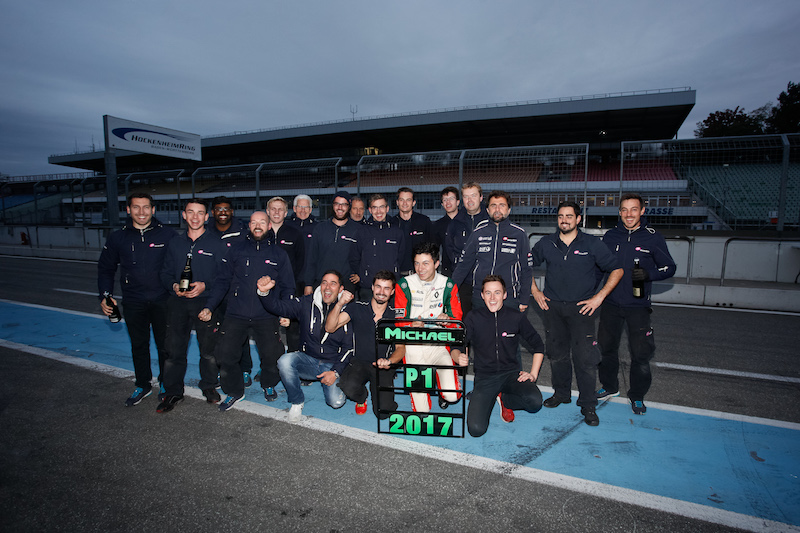
Photo: Greogry Eyckmans/NEC Media
Fenestraz rebounded in race three, with Charles Milesi (currently racing Alpine’s hypercar in the World Endurance Championship) the top NEC-eligible entry down in 20th in race two while Magnus took the honours by finishing race three in 18th. That also put him back in the points lead, after losing it to Michael Benyahia in race two.
Aubry remained in title contention going into the Hockenheim finale, where Yifei Ye led home team-mate Fenestraz in two dominant wins that lifted him to eighth in the standings. That put him just behind Fenestraz and Milesi, with Aubry ending the campaign with a fifth place, a retirement and fifth in the points table too.
Two ninth places delivered Benyahia the title by two points over team-mate Magnus, and in the title-deciding race he was under pressure from his rival for many laps.
From 14th on the grid Magnus had a lot to do, and by half-distance he was already pressuring Benyahia for ninth but just couldn’t find a way past. The self-run Bartlomiej Mirecki finished sixth to end the season 10 points behind the champion.
“By far this was the hardest race with Gilles always behind me,” said new champion Benyahia in disbelief afterwards. “The whole race was about keeping track of Gilles and Bartek, because if he [Mirecki] had gone a little bit too far that would have been a problem for us. I’ve learnt a lot this season, like how to play a championship.”
Both he and Mirecki only made the podium once, each taking a third place at Monza.
- Read more: The statistical rarity Piastri matched with his FIA F3 title [September 2020]
- Read more: Where Formula Renault is headed next, and how it got there [November 2020]
Doureid Ghattas 2018 FR2.0 NEC 1x 8th
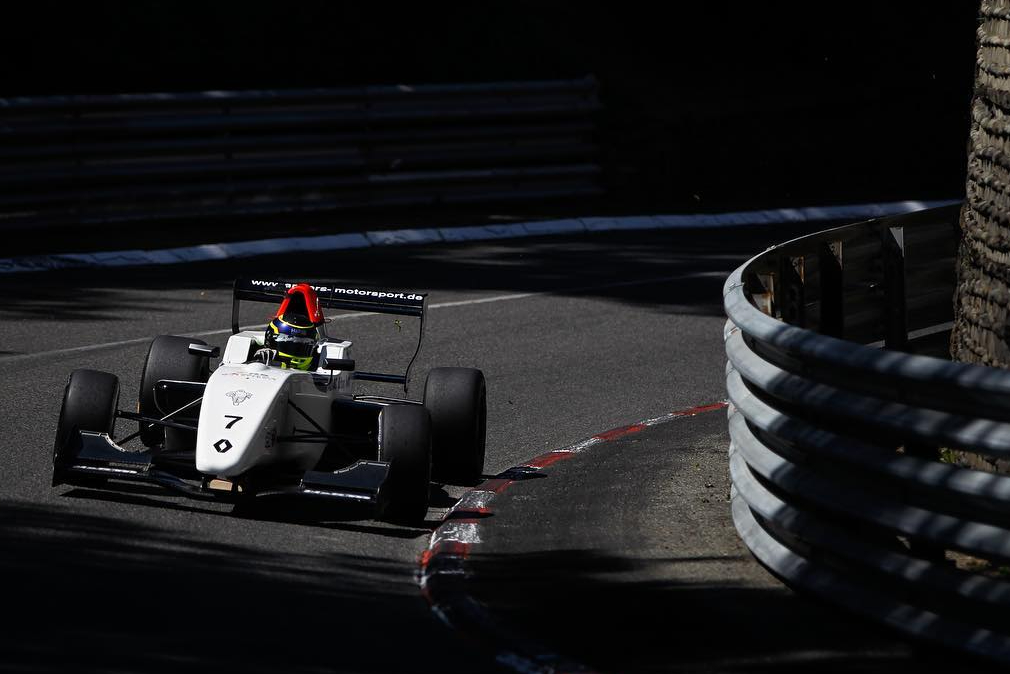
Photo: FR NEC
FR2.0 NEC’s problems somewhat worsened the year after, as although it landed a support slot at the Pau Grand Prix it had to share grids with the FR2.0 Eurocup four times to make a six-round schedule possible without having vanishingly small grids. The calendar for 2018 it originally announced looked very different to the one that ended up being used.
Drivers doing the 10-round Eurocup only needed to add two more weekends to their schedule to do a full NEC campaign, so there were more full-time entries, but they therefore only entered themselves for points in those two rounds.
MP’s Christian Lundgaard and Alex Peroni were the stars of Pau, pushing each other hard in qualifying and the races. Lundgaard claimed race one pole by 0.007 seconds, and was set for victory before an error late in the race let Peroni slip by.
Qualifying for race two was damp, and Peroni prevailed by 0.166s in a final lap shootout. The combination of the race starting behind the safety car, spray from the wet track surface and numerous yellow flags caused by backmarkers meant overtaking was at a minimum later in the day and Peroni held off Lundgaard by 0.125s.
R-ace came to the fore in round two at Monza, with the victories going to Logan Sargeant and Victor Martins and the pair moving to the top of the standings. However it was the drivers level on points down in eighth and ninth, R-ace’s Gabriel Gandulia and Anders Motorsport’s Doureid Ghattas, who were now the title favourites.
The rest of the season did have some twists and turns, and at least 28 cars in each round, but the title contenders never finished higher than 15th in the remaining eight races.
Lundgaard won race one at Spa, and Martins took race two while finishing 18th delivered Phil Hill the points lead. Ye had to work hard to deny Lundgaard another win in race one at the Hungaroring, where Ghattas drew level with Hill on points by finishing 20th. He improved to 19th in race two, won by Lundgaard, which then made him points leader.
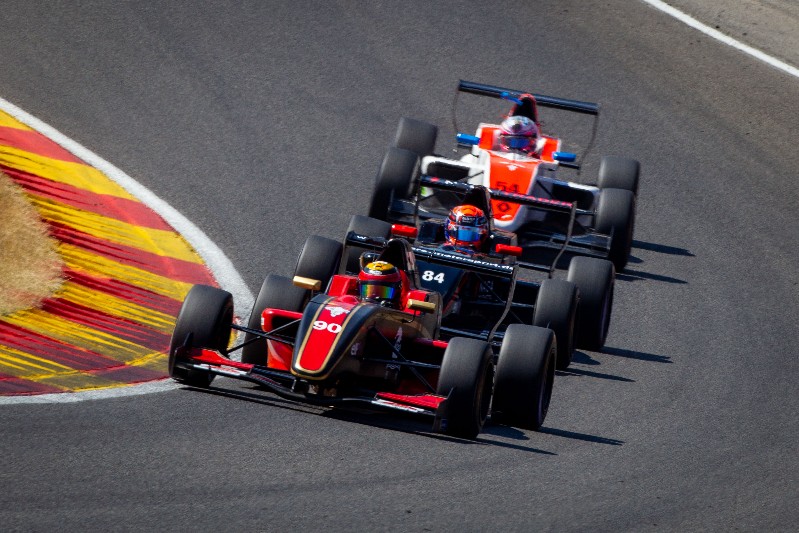
Photo: Gregory Eyckmans / DPPI
Title outsider Sargeant was victorious in the opening Nuburgring race, but spectators would’ve been focusing on the close battle for 22nd involving the three ahead of him in the standings. There was lots of swapping positions, and the trio were often split by less than a second. Ghattas prevailed, leading team-mate Hill and Gandulia.
Hill had to miss race two, and a run to 20th place meant Ghattas now had a huge 44-point lead. R-ace’s Max Fewtrell won that race, and both at the Hockenheim season finale. There was title drama boiling in the lead-in to that event, as Hill left to join ScoRace Team.
He needed to take maximum points in race one with Ghattas retiring to keep the title fight going, but it didn’t work out as Ghattas was crowned by finishing 16th and Hill crossed the line in 21st. Finishing 15th in race two, the best result for a points-scoring driver since round two, was little redemption for Hill.
Formula Regional’s European arrival in 2019 initially looked like good news for FR2.0 NEC, with Renault wanting it to grow and teams wanting to continue running their cars as the Eurocup switched to chassis from another category yet kept its name. However Renault lost the tender to run the FIA’s European championship for FRegional, and the co-existence of two series at that level pushed the Northern European Cup into non-existence after 18 years of action in various forms.
Third-tier single-seaters
Philipp Peter 1992 Austrian F3 Cup 2x 2nd
The Austrian Formula 3 Cup shared grids with German F3 for six of its nine rounds in 1992, as this was a time when the competiton featured the same F3 machinery as other nations.
Jacques Isler Racing’s Philipp Peter, in a brand new Alfa Romeo-powered Dallara F392, ended the season atop the points and he also started the year on top at the Nurburgring in mid-April.
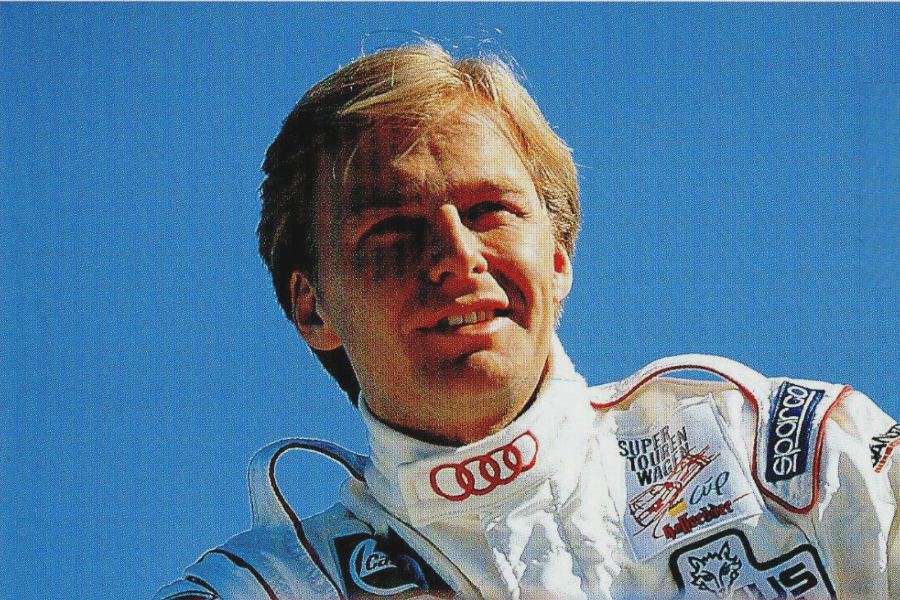
Peter in 1997 (Photo: Audi)
The first qualifying session took place while it was sleeting, and Peter mastered the conditions to take pole by 1.13s. As fog then immersed the circuit, and having been fastest, he was invited back on track to run at a reduced speed and assess whether conditions were suitable for Q2 to run. Peter reported he couldn’t see the marhals, saying it “would be far too dangerous” to be lapping at a representative pace. The session therefore was cancelled.
Race one did go ahead that day though, in the wet, and Peter took the points lead despite falling 2.54s short of victory. He fell to third on lap one, while his own team boss went from third to first as one of few to gamble on using wet weather tyres. Pedro Lamy and Peter then passed Isler on lap three and held their positions until the end.
Lamy, driving for the Wili Weber-run Opel factory team WTS Racing, was only entered for German championship points. The win earned him pole for the next day’s race, which he led the first half of before getting a puncture by going off. Peter then held first place, but only had it for one lap before GM Motorsport’s Marco Werner came through. Werner had started 19th due to needing a push-start, but was already third by the end of lap one.
His Opel power gave him the advantage on Peter in the corners, but the latter’s Alfa Romeo unit was faster for the straights. It led to an astonishing lengthy wheel-to-wheel duel, and both had offs. Peter reclaimed the lead, but a second trip through the gravel meant Werner came back through and he later fell behind Bongers Motorsport’s Jorg Muller and factory Volkswagen driver Diogo Castro Santos, who had started 20th. But fourth still meant a maximum score.
Peter missed the next two rounds at the Osterreichring (now known as the Red Bull Ring in its shortened form), and at Brno finished sixth in both races. Once again, he was the leading driver entered for Austrian F3 points.
Next on the schedule was the Diepholz Airfield circuit, where it was an identical story for Peter with two fifth places. He missed the trip to the Salzburgring, meaning he did none of the races in Austria, but was back in action at the Alemannenring street circuit in Singen (watch a simulated lap in a modern F3 car here) where he was the only Austrian F3 entrant. That meant his race one retirement had no impact on his title hopes, and he finished fourth in race two.
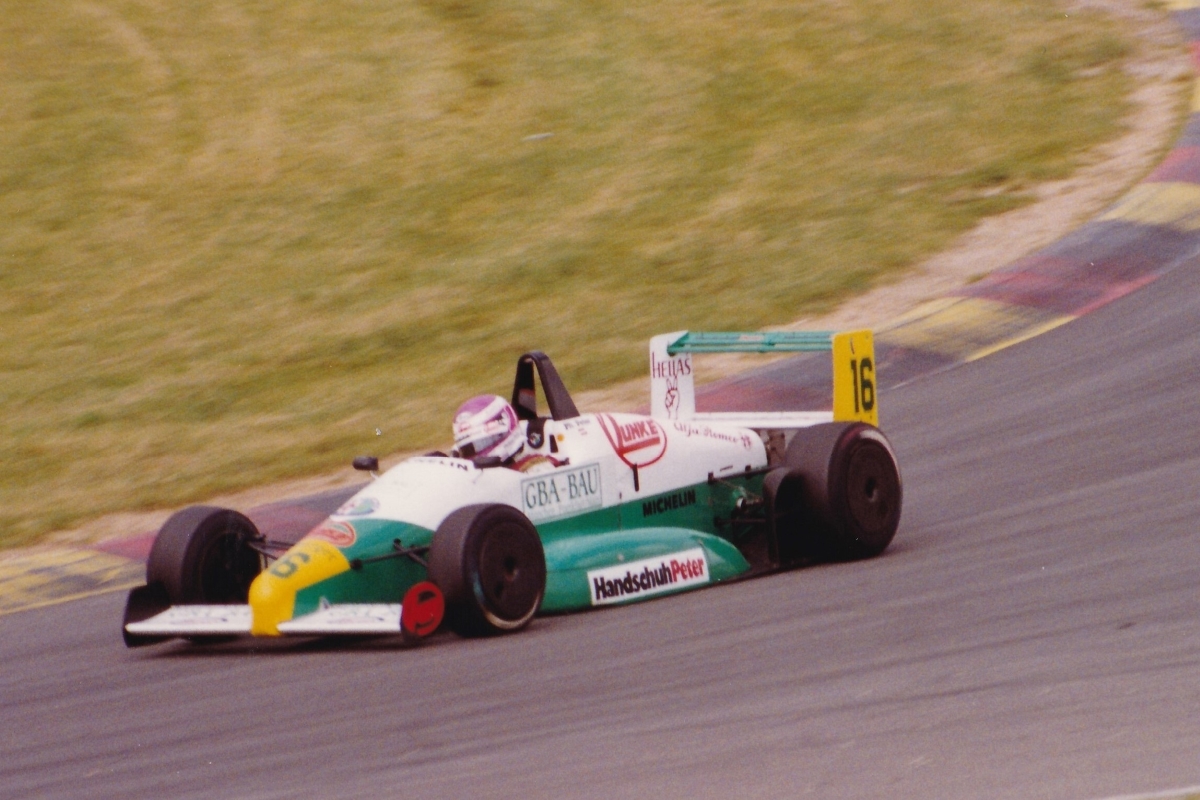
Photo: Roger Gascoigne
On the return to the Nurburgring he had far more opposition, and while seventh in race one [pictured above] earned him maximum points his gearbox failed on the formation lap for race two and so he was a non-starter. His rivals’ results meant however that the title fight would continue on to the Hockenheim finale.
Here he made a return to form with two podiums, becoming champion in race one then going for that all-important first win in race two. He initially pressured leader Lamy, who had celebrated becoming German F3 champion in the previous day’s race, before becoming more focused on defending second from VW’s Sascha Maassen.
Peter ended up fifth in the German F3 standings, and factored in the next two title fights on this list but thanks to a bunch of outright victories while his main rivals could not find the podium’s top step…
Max Angelelli 1993 TOPIC F3 Cup 4x 2nd
For 1993 the cup added a round in Belgium, and gained title sponsorship from Austrian front door manufacturer TOPIC, with Zolder hosting the season opener in a shared event with German F3.
The risk of a 1992-style repeat existed, and while there were many more drivers entered for Austrian points, and in new cars, the highest placed of those in the first race of 1993 was Franz Woss Racing’s Andre Fibier in ninth. In race two it was Peter, who finished third, as G+M Escom Motorspot’s Michael Krumm and VW’s Max Angelelli were one-two both times.
After that, VW decided they fancied a shot at being the best of Austria too.
In round two, on Hockenheim’s short circuit, Peter took pole and was on course for race one victory until Krumm crashed him out, leaving KMS’s Markus Liesner to take a big win ahead of VW’s Maassen. Angelelli was fourth, sandwiched between Roberto Colciago and WTS’s Jos Verstappen after a thrilling race-long battle with both. Maassen led home WTS’s Claudia Hurtgen in race two, as RSM Marko’s Alex Wurz moved into the points lead.

Photo: Roger Gascoigne
At the Nurburgring, Maassen won race one, Angelelli was fourth, Peter recovered to seventh after stalling and Wurz somehow finished 20th after a visor tear-off entered his airbox, caught fire in his engine, led to him trying to pull it out and then spinning.
Race two was calmer, with the ineligible Krumm winning while Maassen and Angelelli [pictured above] were third and fourth after Hurtgen was penalised for jumping the start.
Wurz won at the Osterreichring, then at the Wunstorf Air Base pole went to Maassen but he and Angelelli had to stand below Verstappen on the race one podium as he claimed his maiden F3 win. Success was repeated in race two, Angelelli came third and Wurz was a non-starter after crashing out of race one.
Peter pipped Wurz on their return to the Osterreichring, with the VW duo absent, then beat him to victory by 15.7s at the Salzburgring. Maassen now led Wurz by seven points, with Fibier and Peter 19 behind. Angelelli sat 23 points off the top with five races remaining.
Krumm returned to winning form at the Nurburgring, by just 0.05s over Verstappen in race one. Angelelli was top points scorer in fourth, holding off Maassen by 0.32s and just missing out on third to Abt Motorsport’s Christian Abt. Wurz crashed again.
Angelelli got the better of Abt in race two, moving two points ahead of Maassen at the top of the standings, while Verstappen struck back against Krumm.
Hockenheim hosted the penultimate round, and Angelelli edged Maassen to pole by 0.02s. Colciago came through from sixth on the grid to win race one, leading Angelelli by 0.44s and Krumm by 0.74s.
Krumm had briefly passed Angelelli on lap one, but by the end of the lap was behind Colciago in third as a seven-car lead battle formed. Verstappen got to the front, but then was dropped from the fight after spinning, and at the last corner of the race Angelelli tried passing Colciago, who had to weave to the finish line to deny his Italian compatriot.
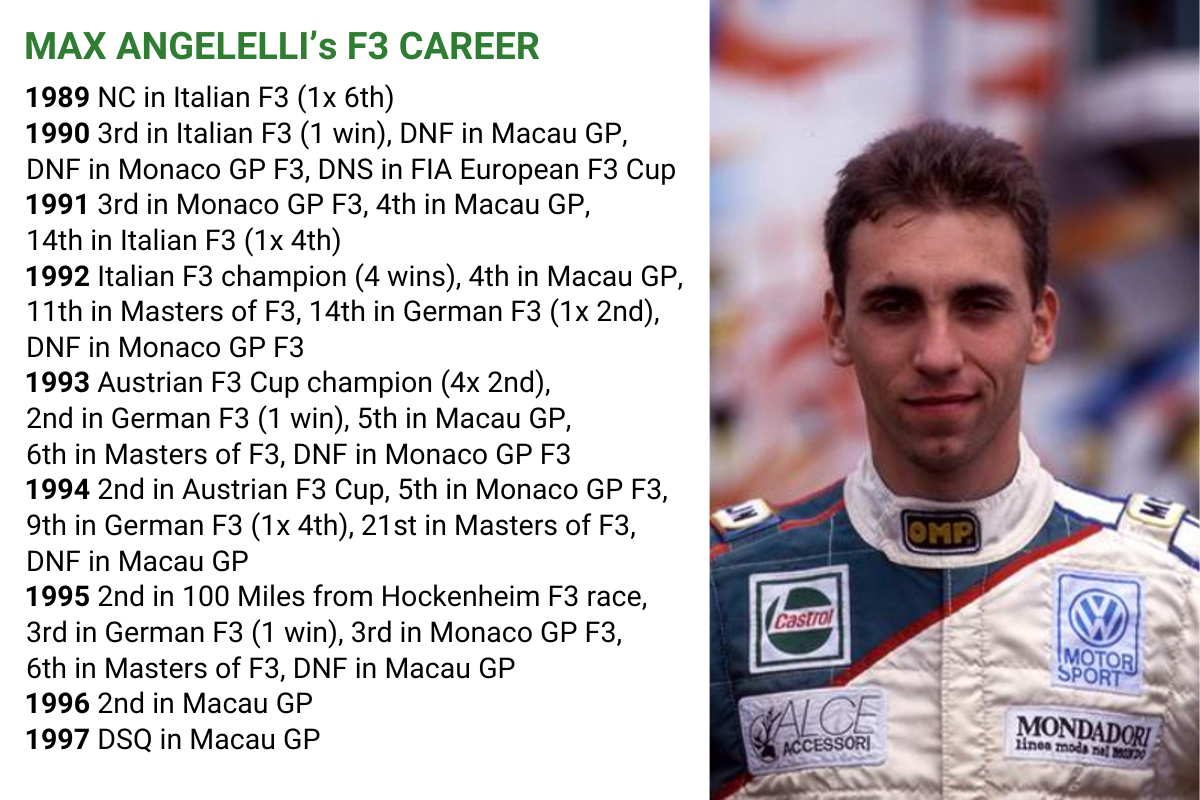 Peter’s title hopes ended on the formation lap of race two due to a gearbox failure, and on lap one Angelelli took the lead straight away. Verstappen pressured the VW man until he got a slow puncture, but the fastest man on track was Maassen and he overtook Angelelli with three laps to go to close back to within five points. Wurz ended his title ambitions by finishing 19th.
Peter’s title hopes ended on the formation lap of race two due to a gearbox failure, and on lap one Angelelli took the lead straight away. Verstappen pressured the VW man until he got a slow puncture, but the fastest man on track was Maassen and he overtook Angelelli with three laps to go to close back to within five points. Wurz ended his title ambitions by finishing 19th.
When the paddock reunited for the Osterreichring season finale a month later, Maassen was not among them and so Angelelli was crowned before turning a wheel. But he still needed a win.
Dashing those hopes was F3 debutant Oliver Tichy, entered by Franz Woss. The 18-year-old Austrian denied Angelelli pole by an impressive 0.412s, then romped to victory by 11.917s over Wurz, with Angelelli a distant third.
Angelelli and Maassen went on to conquer America’s sportscar scene, Verstappen and Wurz reached F1, while the little-remembered Tichy became a factory VW driver in F3 then was picked up by Helmut Marko (latterly known for scouting teenaged talents with Red Bull) for his International Formula 3000 squad and made the podium as a rookie.
Second-tier single-seaters
Oriol Servia 1999 Indy Nxt 5x 2nd
It was crazy enough that Servia won the 1999 Indy Nxt title without ever standing on the top step of the podium, but the fact his title rival and Dorricott Racing team-mate Casey Mears didn’t either makes this a huge statistical anomaly.
There were two drivers who took two wins each, but ended up third and seventh in the standings, while Servia’s title charge was built on five second places and Mears split his four podium results into two seconds and two thirds. Two drivers outside of the top 10 in the standings won races, and for both their victory contributed to around a third of their total points.
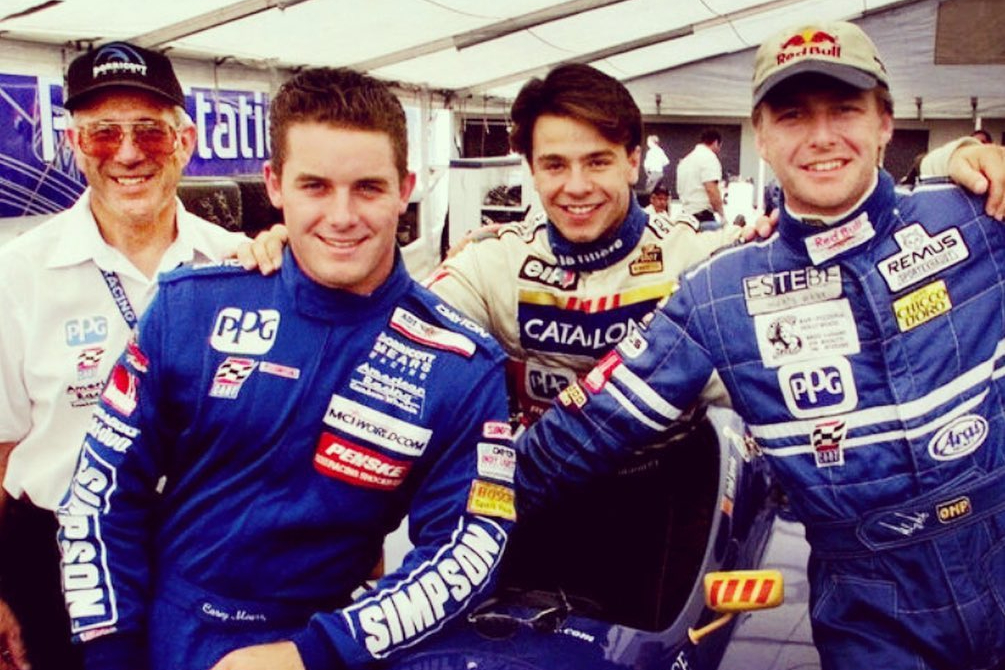
Photo: Oriol Servia
Servia came seventh in the 1998 season as a rookie, getting two podiums, and of the drivers ahead of him in the standings all but the champion returned for 1999. Mears meanwhile had two seasons of experience and in ’98 was 17th in the points.
The year began with Mario Dominguez laying down his title credentials with victory at Homestead-Miami, with Mears and Servia a very distant fifth and sixth. Domingues came nowhere near close to replicating that result thereon, but still led the points after round two in Long Beach which Philipp Peter won. The Dorricott drivers finally looked competitive at Nazareth, with Servia taking pole and finishing second, just ahead of Mears. But an 18-year-old Scott Dixon now led the points.
Mears made the podium at Milwaukee to move to the head of the championship, then Servia went on a run of second places at Portland, Cleveland and Toronto to build a big points lead over his team-mate. Servia’s next second place in Detroit put him 20 points clear (equivalent to a win) of Mears and Peter, while 1998 title runner-up Didier Andre was 12th in the standings.
Servia finished fourth, seventh and 14th in the last three races, with Mears doing slightly better with a third, a fifth and a 13th, and that comfortably secured them the top two places in the championship. Peter petered out after his third win, while Jonny Kane, Dixon and Andre suddenly became the form drivers. Kane won the finale (by just 0.049s over the Stig) from pole and rose from ninth to fourth in the standings, Dixon took a win and a second to climb from eighth to fifth, and Andre almost doubled his points tally with first and third in the final two races to lift himself from 12th to eighth in the points table.
- Read more: The second-tier champions Pourchaire emulated with a one-win season [December 2023]